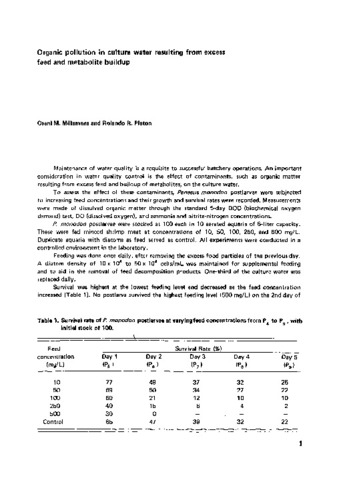Organic pollution in culture water resulting from excess feed and metabolite buildup
- Global styles
- MLA
- Vancouver
- Elsevier - Harvard
- APA
- Help
Share
นามธรรม
Penaeus monodon postlarvae were subjected to increasing feed concentrations and their growth and survival rates were recorded. Measurements were made of dissolved organic matter, and ammonia and nitrite-nitrogen concentrations. Survival was highest at the lowest feeding level and decreased as feed concentration increased. It is concluded that although organic matter enriches the food supply for P. monodon postlarvae, at higher concentration levels it can pollute the culture water, which in turn leads to mass mortality of the postlarvae. Secondly, the survival rate of P. monodon postlarvae is directly related to dissolved organic matter concentration, oxygen tension, and ammonia-nitrogen concentrations in the culture water. Even at sublethal levels these adverse environmental conditions decrease the survival rate.
Description
Extended abstract only.
การอ้างอิง
Millamena, O. M., & Platon, R. R. (1977). Organic pollution in culture water resulting from excess feed and metabolite buildup. SEAFDEC Aquaculture Department Quarterly Research Report , 1(3), 1-4. http://hdl.handle.net/10862/2294
Type
Articleคอลเลกชัน




